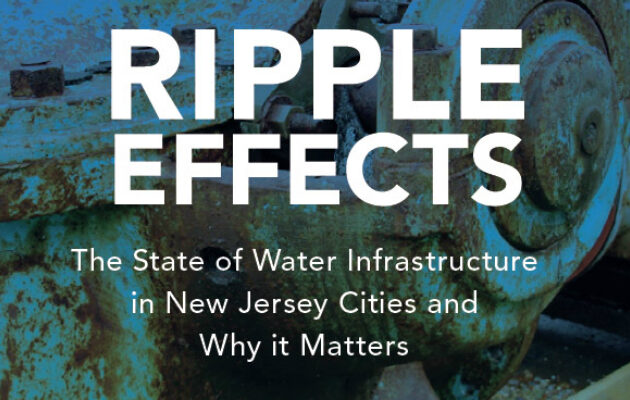Hidden beneath New Jersey’s 21 fastest-growing cities are aging pipelines that carry a mix of household sewage and rainwater that, even during a routine storm, spew their slurry into rivers, streams, bays and streets, parks and basements.
Upgrading the so-called combined sewer systems so they comply with clean water requirements would cost hundreds of millions that the cities, including Hoboken, Jersey City, Camden and Newark, don’t have.
This unsavory reality is among the findings of two reports released by New Jersey Future, a nonprofit organization that advocates smart-growth policies: a comprehensive analysis of the extent of the problems in cities prepared by Rutgers University, and Ripple Effects, which summarizes the analysis and adds case studies from four cities.
Among the report’s findings:
- The cities with the oldest water infrastructure are seeing renewed growth pressure. They accounted for one-quarter of the state’s population growth between 2008 and 2012, and are projected to absorb one-fifth of future population and employment growth through 2040.
- Drinking water and wastewater pipes need attention statewide, but nowhere more than in our older cities, where pipe systems are routinely more than a century old. In Hoboken, one of the cities studied, some pipes date back to the time of the Civil War.
- New Jersey cities now face federal and state deadlines to control their combined sewer systems, at a projected cost of more than $2 billion.
- Many of these cities lack the financial resources to pay for necessary upgrades; 36 percent of the state’s residents who live in poverty live in these cities.
- Upgrading is further complicated by the maze of interwoven authorities that govern water distribution, collection and treatment. Though New Jersey’s combined sewer discharges are on the scale of Philadelphia’s, instead of one city water department, there are 18 entities in charge of sewage collection and eight sewage treatment authorities, in addition to many more that manage drinking water systems.
- Redevelopment and innovative approaches such as the use of green infrastructure, which helps keep stormwater out of urban sewer systems, are helping to alleviate and sometimes reverse the problem in some areas.
NJ Spotlight notes the 137-page report “study is a clarion call to the state’s urban areas that they can ill afford to ignore a problem that results in more than 7 billion gallons of diluted sewage each year being dumped in New Jersey’s waterways.”
“One point is clear: With aging water infrastructure, what can go wrong at some point will, unless preemptive action is taken,’’ said Daniel Van Abs, the principal investigator for the study. “Looking the other way does not make the system work any better.’’
The cost to fix the infrastructure is at least $2 billion, according to the report. In Newark, the report estimates it will cost $500 million.
NJSpotlight notes the “problem also has been documented in other studies, including a report by an independent bipartisan blue-ribbon panel issued more than a year ago. It projected the cost of fixing New Jersey’s aging wastewater treatment plants and drinking water facilities at more than $36 billion.”
The combined sewer systems, according to NJ.com, are “no longer used in new construction because of their tendency to become overburdened during storms and flooding events. When they’re overloaded, they send partially-treated or raw sewage through 217 discharge points located along waterways around the state.”
NJ.com mapped those state-permitted discharge points in New Jersey.
“With continued degradation of urban waterways, increased flooding from storm events, and threats to public health, we know that we can no longer afford to defer maintenance and upgrades to these systems,’’ said Chris Daggett, president and chief executive officer of the Geraldine R. Dodge Foundation.
Read the full report on New Jersey Future’s website.

